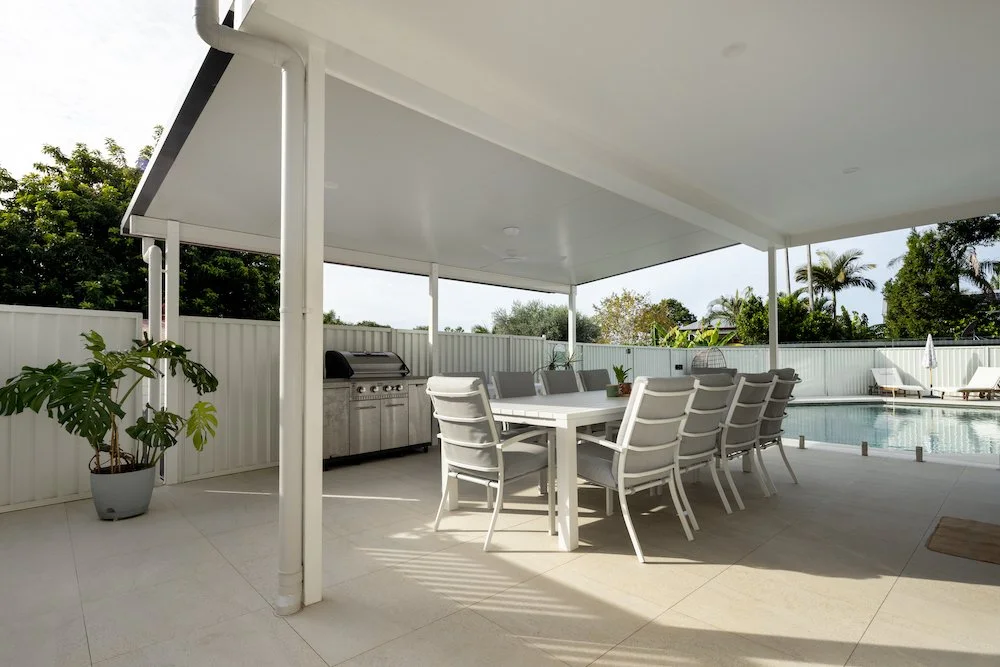Designing For Indoor-Outdoor Living: Tips For Australian Homes
Helping you create a home suited to your lifestyle.
Designing For Indoor-Outdoor Homes
In Australia, we are lucky to enjoy some of the best weather and natural surroundings in the world. So it makes sense that more and more homeowners are embracing indoor-outdoor living.
Done well, it can completely transform how you live, entertain, and relax at home. Whether you are building from scratch or renovating an existing space. Here are our top tips to help you blur the line between inside and out, the right way.
Outdoor Living (pictured left) & Indoor Living (pictured right) ↓
No 1. Open Up With Large Format Doors
The key to seamless indoor-outdoor flow? Remove the barrier.
Install sliding, stacking or bi-fold doors that open up your internal living area to your outdoor space.
This not only invites in more light and air, it creates a visual and physical connection that makes both areas feel larger and more integrated.
No 2. Create One Continuous Living Zone
Think of your outdoor areas as an extension of your indoor space. Match materials, colours and design elements to create continuity.
For example:
Use similar flooring inside and out (e.g. concrete, decking or tile).
Repeat textures or tones in your cabinetry and outdoor furniture.
Align ceiling lines or roof structures to visually connect the spaces.
Similar Tones/Textures Used Inside & Out ↓
No 3. Design For Function First
A beautiful outdoor area is great, but it needs to work for how you live.
Ask yourself:
Will you be entertaining regularly?
Do you need space for cooking or dining?
Do you want protection from sun or rain?
Is it child or pet-friendly?
Incorporate features like:
Built-in BBQs or outdoor kitchens.
Covered alfresco zones.
Fans, heating, and lighting for year-round use.
Integrated storage and durable furniture.
No 4. Prioritise Light, Ventilation & Orientation
Good indoor-outdoor design isn’t just about aesthetics. It’s about comfort.
Consider:
North-facing orientation to capture sunlight year-round.
Eaves or pergolas to provide shade during hotter months.
Cross-ventiliation to keep the house naturally cool.
Window placement to let in views and breezes.
Cross Ventilation & Window Placement For Views/Breeze ↓
No 5. Blend Landscaping In
Your outdoor space should feel like a natural extension of the indoors, not an afterthought. Use landscaping to soften transitions, frame views, and add privacy.
Think about:
Raised garden beds or vertical gardens.
Natural screening with trees or hedges.
Low-maintenance plants that thrive in your local climate.
Final Thoughts
Indoor-outdoor living isn’t a trend, it’s a lifestyle that suits the Australian way of living. With smart design, your home can flow effortlessly between inside and out, enhancing both how it looks and how it feels.
If you are ready to transform your space, we are happy to help you design and build something truly special.










